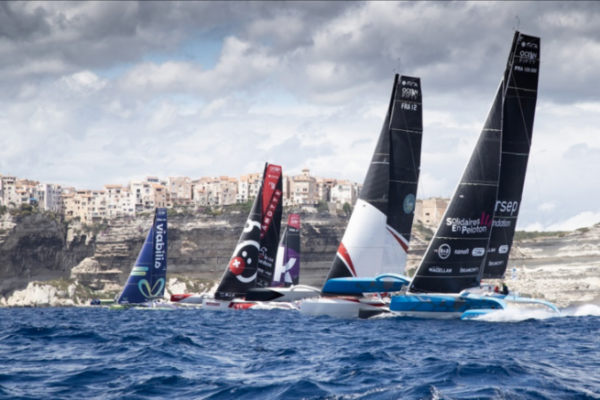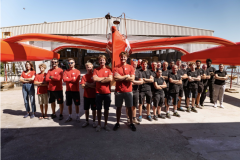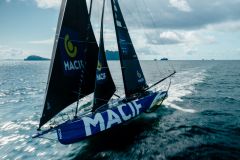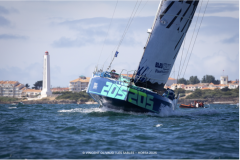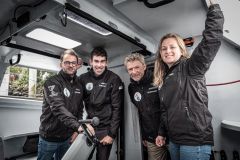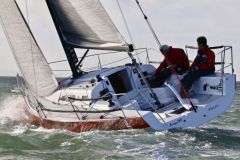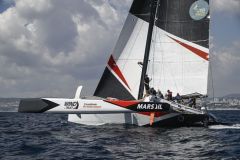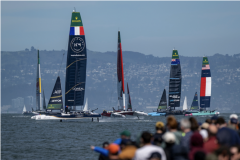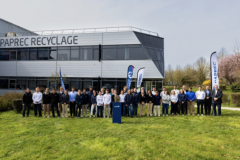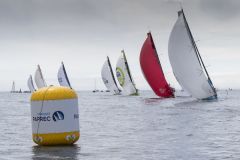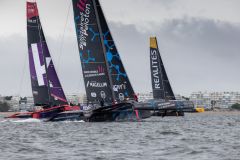A little history...
The Terre Neuvas were fishermen mainly from the west coast of France, notably Brittany, but also the Basque country and Normandy. They traditionally traveled to Newfoundland, an island off the west coast of Canada, to fish for cod. Known as the "cod route" or the "Newfoundland route", the maritime route taken by these fishermen was perilous due to the North Atlantic's harsh weather conditions, icebergs and storms. The Terre Neuvas often set off on fishing campaigns that could last several months, or even most of the year, before returning home with their cargo of salted cod.
A new one-design race dedicated to the Ocean Fifty
It was in tribute to these extreme fishermen, who knew when they were leaving but never when they were coming back, that Ultim Sailing, the Ocean Fifty Class and the local authorities of Saint-Brieuc and Saint-Pierre et Miquelon decided to create the Route des Terre Neuvas race. This is a 2,120-mile transatlantic race from west to east, linking the St Pierre et Miquelon archipelago to the Bay of Saint-Brieuc. It is raced by a crew of three, accompanied by a mediaman. Emmanuel Bachellerie, one of the co-founders of Ultime Sailing, tells us more about the birth of this race.
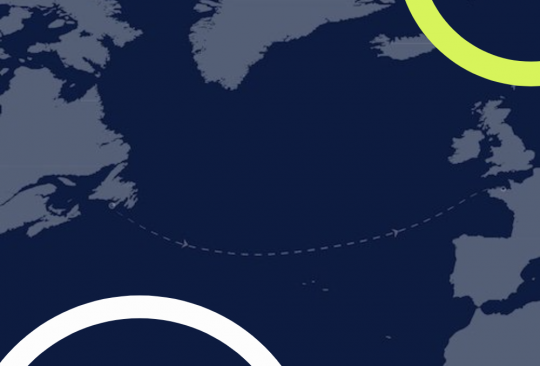
How did the Route de Terre Neuvas race come about?
When Ultim Sailing was set up, Matthieu Sarrot and I thought directly about a race project, which was up and running by spring 2021. We thought about ocean racing models, economic models, and the necessary and imperative elements for the profitability of a race, whatever its class. We looked at the historic and essential races for the different classes of boats, and shared our analysis with the different classes.
After discussions with several classes, including the Ocean Fifty, it became clear that they were increasingly looking for a single-crew race. In multiscratch races, the first to cross the line gets all the lights.
On a Route du Rhum or a Transat Jacques Vabre, once the first has crossed the line, it's more complicated for the following boats. In a way, it's quite logical: when you watch a soccer World Cup, you remember the winner.
In ocean racing, there are several winners, because there are several categories of boats, but this can be hard for the general public to understand.
We thought about a transatlantic race, as it's a fairly natural playground for boats. We then looked for the right format for a transatlantic race, given the architecture of the Ocean Fifty, 50-foot trimarans, and the point of sail. These are more downwind boats, with a potential tendency to end up upside down upwind. We also wanted a shorter format than a Transat Jacques Vabre or Route du Rhum, i.e. between 2,000 and 2,500 miles. Finally, we were interested in the territories. Saint-Pierre-et-Miquelon said yes, and Saint-Brieuc was keen to have a recurring classic.
We shared these thoughts with the Ocean Fifty class and then with the two towns, and came up with the right timetable. In the end, the "ideal" distance, pace and territories and the cross-referencing with the class matched what we'd put down on paper.
What are the challenges of organizing a transatlantic race from St-Pierre-et-Miquelon?
When you're working with an island, it's always more complicated in terms of location scouting and travel. Saint-Pierre-et-Miquelon is a relatively unknown territory compared to Martinique, Guadeloupe... It's harder to place. I call it the Ushuaïa of the North. Everyone knows it, but it's still an area of mystery.
We had to convince the partners of the class boats that today's sailors were yesterday's pioneers. It's interesting to go to places other than Guadeloupe, Martinique or Brazil.
In terms of climate, it's very northerly, so we can't leave at any time. That's what Mathieu and I like about it. We didn't create Ultim Sailing, buy an Ultim, create races to remake what already existed. There's no revolution here either, just a different dimension for Ocean Fifty. In the same style, there's the Quebec Saint-Malo, with two points of history, but it's a multi-class race.
I would have loved to have done what SAEM Vendée did with the Vendée Arctique. It's a hot format, which takes you very far north and into little-known regions. Historically, sailors were discoverers and explorers. If you always do the same route, on the scale of a round-the-world or transatlantic race, you lose a bit of history.
The Route des Terre Neuvas is two adventures in one. First and foremost, it's a sporting challenge of the highest level, because it's never a trivial matter to sail 2,000 miles. The Ocean Fifty are dragonflies, they go very fast and are fickle.
There's also a very important heritage and cultural component. Terre Neuvas is a human adventure. Our contemporaries wouldn't have the courage to go out in the weather, in the clothes, and on the boats of these fishermen to go cod fishing. It was breathtaking.
We're going to try and set up a big exhibition in Saint-Brieuc, to show the men and the ships and what they were going to get on the banks of Newfoundland. They were away from their families for months at a time. She didn't know if they'd ever come back. Today, fishermen's wives know there's a risk, but it's considerably more measured than the men we're talking about. It's a piece of maritime history. We like to put meaning into the races we create.
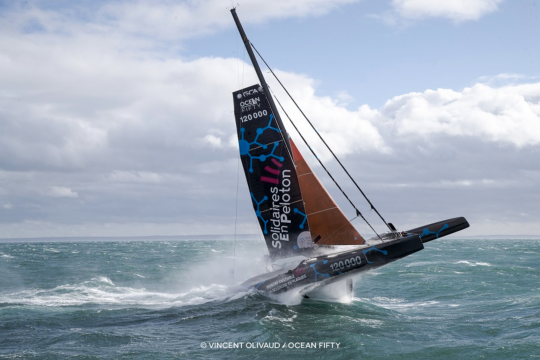
How does a transatlantic race in a class that is less well known to the general public compare with a Vendée Globe or Route du Rhum?
Comparison is never reason. The Vendée Globe was born in 1989, and will be 40 years old in 5 years. Many people have compared the Arkea Ultim Challenge to the Vendée Globe. I've argued against that all the time. There's no comparison. On the pontoons in 1989, it wasn't at all the same mass as in 2020. They had screwdrivers and wrenches in their hands to see if they were going to get in.
So we have to give ourselves time. We plan the race every 4 years. We're not interested in one-shots. Everything goes very fast, everything is forgotten. You have to give yourself time to set up the race. Project it over time.
The organization and economic model of the race are such that each boat has a mediaman, financed by the organization. The idea is to have material during the race, and afterwards. Film the delivery to Saint-Pierre-et-Miquelon, the stand-by on site, the race and the finish to make a 52-minute film which, I hope, will interest our friends at France Télévision.
Visibility will be enhanced, as all boats have the same measurement. There's a certain degree of fairness. Admittedly, some boats are more recent than others, and the prize often goes to the most recent. But there is an alignment in terms of performance. We'll have sporting homogeneity, because the race is dedicated to the class. For the general public, it will be easier to understand, with fairly small gaps at the finish. It's like the little horse race: there are 10 at the start, and the race will end when all 10 have finished.
Will there be any pre-race events in Saint-Pierre-et-Miquelon?
There will be events focusing on the people of Saint-Pierre, in St-Pierre, so that the island's inhabitants are involved in the race. We'll also be doing our utmost to ensure that the Terre-Neuvas exhibition is completed. At the finish, it will be a classic village. The event poster will be unveiled on April 10, and it's the most beautiful we've done in 3 years on all our races. It's by Jean-Baptiste Epron.

 /
/ 